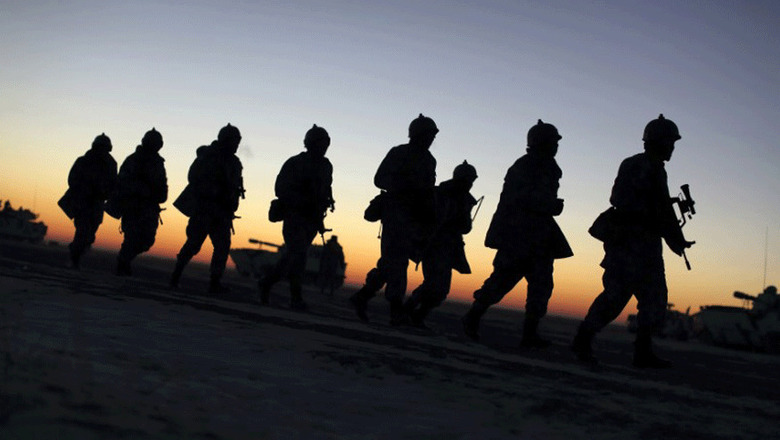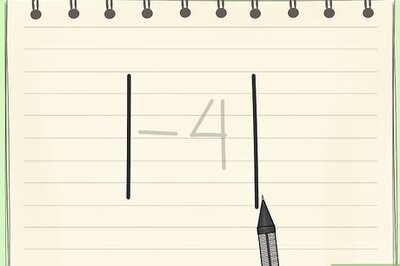
views
What exactly is going on the Doklam Plateau, at the tri-junction of India, Bhutan and China, where Indian and Chinese troops are currently engaged in a face-off? This is the territory that is near the border of the Indian state (and till the early 1970s the Indian protectorate) of Sikkim, the kingdom of Bhutan and China.
The specific area under contention is recognised as Bhutanese territory by India and Bhutan. Some of it is claimed by China as part of its “ancient” frontier — Chinese maps, claims and dates of maps and claims are flexible and keep evolving with political situations, but that is another matter. Since 1984, Bhutan and China have had 24 rounds of talks to delineate the border and the conversation is ongoing.
In parallel, the Sikkim-China border is also being discussed, as a segment of a broader negotiation by special representatives of India and China on the border between the two countries. As part of this negotiation, India says there is agreement on the “basis of alignment” but not on the final alignment of the border at Sikkim. Separately, India and China have also concurred that at tri-junction points — where Indian and Chinese borders both touch a third country, say Bhutan or Myanmar — border management and protocols would entail a consensus involving all three countries.
These are the facts as India and Bhutan understand them. How has China sought to change these facts in the past fortnight? On June 16, Chinese troops, accompanied by earth movers and other construction equipment, marched south on the plateau to a clearing known locally as “Turning Point”. This is proximate to the Indian post of Doko La, on the border of India (Sikkim) and Bhutan. It is also close to Chicken’s Neck or the Siliguri Corridor, the narrow strip of land that links India’s Northeast to the rest of the country.
Since the Chinese soldiers (and earth movers) were in Bhutan’s territory, it was Bhutanese soldiers who confronted them and asked them to return to normal positions. The Chinese pushed back the Bhutanese troops. It was apparent they were planning to build roads on Bhutanese territory, close to a strategically critical Indian location, and change the status quo on the ground.
At this stage, in consultation with Bhutanese authorities, Indian soldiers came down from Doko La to challenge the Chinese ingress. That is where things stand. Soldiers of the two large Asian countries are facing each other — through at the distance of a few kilometres, and without physical conflict of any nature — in a third country. Indian troops are there to defend Bhutanese sovereignty, in keeping with Bhutanese wishes. Chinese troops are in violation of Bhutanese sovereignty.
Why has this happened and what next? Border incursions by the Chinese on land that is actually disputed or that is conveniently and unilaterally declared as disputed by the Chinese or is no man’s land is old hat along China’s South Asian frontiers. The building of roads and creation of outposts closer and closer to Indian (or in this case Bhutanese) territory has been a frequent occurrence. Even when the Chinese retreat after a face-off, as they have in Ladakh in the past, they do tend to retain a territorial or infrastructural advantage, and “nibble away” at border territory.
In the case of the incident at Turning Point, there are two additional concerns. First, in the past few years China has attempted to hem in India and build facilities and constituencies in various South Asian neighbours. This has happened in Bhutan, where at least one former prime minister was too friendly with Beijing for New Delhi’s comfort. The moving of troops and road construction equipment to Doklam Plateau is a provocation in a country that is India’s closest ally, and dependent on New Delhi for its security.
Second, the timing of the incursion could well be linked to Prime Minister Narendra Modi’s visit to the United States, which came about 10 days after the irregular Chinese troop movement. Perhaps it was a warning to the Indian prime minister. Perhaps it was in anticipation of a poor visit to the White House (in which case the calculation went horribly wrong, since the meeting of Prime Minister Modi and President Donald Trump went rather well).
Whatever the reason, the stand-off will probably take time to resolve itself. Neither President Xi Jinping — China’s most powerful leader in decades but it would appear also its most unsophisticated foreign policy practitioner in a long time — nor Prime Minister Modi can back down easily. For India, the presence of its soldiers on the Doklam Plateau is a signal of its commitment to the independence of Bhutan, a test of its willingness to take on Chinese bullying in the region, and a security imperative — given that the defence of Doklam is virtually the defence of India, so close as it is to a vital Indian choke point.
This doesn’t necessarily mean there will be violence. Typically, it will all depend on how long Chinese logistical lines can sustain the troops at Turning Point and what talks between higher-level military officers at the border as well as diplomats can achieve and how soon.
More than grabbing territory the Chinese are attempting to drive a wedge between Bhutan and India, and send the message that Bhutan’s security cannot be guaranteed by India. For India, and for Modi, it is important to expose that message as hollow. As such, there is simply no alternative to staying put on the Doklam Plateau till the last Chinese soldier leaves and the last Chinese earth mover drives off.(The author is distinguished fellow, Observer Research Foundation. He can be reached at [email protected]. Views are personal.)

















Comments
0 comment